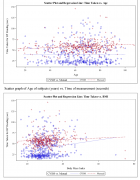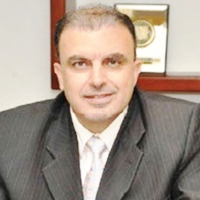Abstract
Editorial
Paediatric Medicines: Formulation Considerations
Fátima Roque*
Published: 31 July, 2017 | Volume 1 - Issue 1 | Pages: 024-027
The use of unlicensed and off-label medicines in children is widespread and has raised an increasing concern over the last years. The majority of medicines taken by children are extemporaneously compounded by pharmacist, and there is a lack of information regarding bioavailability, suitability and stability. These formulations must be prepared from pure active substance and not from commercially available dosage forms. The development of paediatric formulations, particularly those suitable for very young children, can be a challenge to pharmacists. There is limited knowledge available about the acceptability of different dosage forms, administration volume, dosage form size, taste, safety of formulation excipients regarding to age and development status. The selection of formulation and route of administration depends on the disease being treated and the clinical condition. European Guidelines and reflection papers recommend that pharmaceutical development should consider some parameters like capability, acute or long-term illness, caregiver convenience, disability, culture differences and formulations more attractive to children must be explored.
Read Full Article HTML DOI: 10.29328/journal.hps.1001004 Cite this Article Read Full Article PDF
References
- European Comission. Better Medicines for children. Proposed regulatory actions on paediatric medicinal products. 2002.
- European Parliament and Council of European Union. Regulation (EC) No. 1901/2006 of the European Parliament and of the Council of 12 December 2006 on Medicinal Products for Paediatric Use. Official Journal of the European Union. 2006.
- European Medicines Agency and Paediatric Committee. 10-year Report to the European Commission General report on the experience acquired as a result of the application of the Paediatric Regulation”. 2016.
- Corny J, Lebel D, Bailey B, Bussieres JF. Unlicensed and Off-Label Drug Use in Children Before and After Pediatric Governmental Initiatives. J Pediatr Pharmacol Ther. 2015; 20: 316-328. Ref.: https://goo.gl/U6Rfrt
- Magalhaes J, Rodrigues AT, Roque F, Figueiras A, Falcao A, et al. Use of off-label and unlicenced drugs in hospitalised paediatric patients: a systematic review. Eur J Clin Pharmacol. 2015; 71: 1-13. Ref.: https://goo.gl/h9SJ3G
- Sohn M, Moga DC, Blumenschein K, Talbert J. National trends in off-label use of atypical antipsychotics in children and adolescents in the United States. Medicine (Baltimore). 2016; 95: e3784. Ref.: https://goo.gl/JKpDE6
- Sonninen K, Jyrkka J, Martikainen JE, Malmstrom K, Makela MJ, et al. Age-related off-label use of nasal corticosteroids for allergies is relatively common in Finnish children with asthma. Acta Paediatr. 2017. Ref.: https://goo.gl/pVRHDS
- Lai LL, Koh L, Ho JA, Ting A, Obi A. Off-Label Prescribing for Children with Migraines in U.S. Ambulatory Care Settings. J Manag Care Spec Pharm. 2017; 23: 382-338. Ref.: https://goo.gl/JCkAtt
- Schröder C, Dörks M, Kollhorst B, Blenk T, Dittmann RW, et al. Outpatient antidepressant drug use in children and adolescents in Germany between 2004 and 2011. Pharmacoepidemiol Drug Saf. 2017; 26: 170-179. Ref.: https://goo.gl/GkvNFD
- Schröder C, Dörks M, Kollhorst B, Blenk T, Dittmann RW, et al. Outpatient antipsychotic drug use in children and adolescents in Germany between 2004 and 2011. Eur Child Adolesc Psychiatry. 2017; 26: 413-420. Ref.: https://goo.gl/bRHxfC
- Nahata MC, Allen LV. Extemporaneous drug formulations. Clin Ther. 2008; 30: 2112-2119. Ref.: https://goo.gl/rfYfoq
- Fabiano V, Mameli C, Zuccotti GV. Paediatric pharmacology: remember the excipients. Pharmacol Res. 2011; 63: 362-365. Ref.: https://goo.gl/JGUhbK
- Nogueira F, Carvalho A, Tavares L, Ribeiro MP, Coutinho P, et al. Generic Drugs and Brand Name Products: an approach about excipients. Rev Saúde Pública. 2014; 48: 102. Ref.: https://goo.gl/uz2hKt
- European Comission, Guideline Excipients in the label and package leaflet of medicinal products for human use. 2003.
- Roque F, Rama AC, Sousa JJ, Pina ME. Development and stability assessment of liquid paediatric formulations containing sildenafil citrate. Brazilian J Pharm Sci. 2013; 49: 381-388. Ref.: https://goo.gl/m7DdGM
- Provenza N, Calpena AC, Mallandrich M, Halbaut L, Clares B. Design and physicochemical stability studies of paediatric oral formulations of sildenafil. Int J Pharm. 2014; 460: 234-239. Ref.: https://goo.gl/9kbyHg
- Alemón-Medina R, Chávez-Pacheco JL, Rivera-Espinosa L, Ramírez-Mendiola B, García-Álvarez R, et al. Extemporaneous Formulations of Metformin for Pediatric Endocrinology: Physicochemical Integrity, Cytotoxicity of Sweeteners, and Quantitation of Plasma Levels. Clin Ther. 2015;37: 1689-1702. Ref.: https://goo.gl/xvTvCe
- de Goede AL, Boedhram RR, Eckhardt M, Hanff LM, Koch BC, et al. Development and validation of a paediatric oral formulation of clonidine hydrochloride. Int J Pharm.2012; 433: 119-120. Ref.: https://goo.gl/pAvWUZ
- Juarez Olguin H, Flores Perez C, Ramirez Mendiola B, Coria Jimenez R, Sandoval Ramirez E, et al. Extemporaneous suspension of propafenone: attending lack of pediatric formulations in Mexico. Pediatr Cardiol. 2008;29: 1077-1081. Ref.: https://goo.gl/6ee3YD
- Sunkara G, Bende G, Mendonza AE, Solar-Yohay S, Biswal S, et al. Bioavailability of valsartan oral dosage forms. Clin Pharmacol Drug Dev. 2014; 3: 132-138. Ref.: https://goo.gl/96tiJF
- Batchelor HK, Marriott JF. Formulations for children: problems and solutions. Br J Clin Pharmacol. 2015; 79: 405-418. Ref.: https://goo.gl/Vy9trj
- Liu F, Ranmal S, Batchelor HK, Orlu-Gul M, Ernest TB, et al. Formulation factors affecting acceptability of oral medicines in children. Int J Pharm. 2015; 492: 341-343. Ref.: https://goo.gl/SsDux5
- European Medicines Agencie. Committee for Medicinal Products for Human Use (CHMP) Paediatric Committee (PDCO). Guideline on pharmaceutical development of medicines for paediatric use. 2013.
- Zajicek A, Fossler MJ, Barrett JS, Worthington JH, Ternik R, et al. A report from the pediatric formulations task force: perspectives on the state of child-friendly oral dosage forms. AAPS J. 2013; 15: 1072-1081. Ref.: https://goo.gl/Zma5Wg
- Ivanovska V, Rademaker CM, van Dijk L, Mantel-Teeuwisse AK. Pediatric drug formulations: a review of challenges and progress. Pediatrics. 2014; 134: 361-372. Ref.: https://goo.gl/rAQsz2
- Elder DP, Kuentz M, Holm R. Pharmaceutical excipients - quality, regulatory and biopharmaceutical considerations. Eur J Pharm Sci. 2016; 87: 88-99. Ref.: https://goo.gl/JPfwH9
- Ranmal SR, Cram A, Tuleu C. Age-appropriate and acceptable paediatric dosage forms: Insights into end-user perceptions, preferences and practices from the Children’s Acceptability of Oral Formulations (CALF) Study. Int J Pharm. 2016; 514: 296-307. Ref.: https://goo.gl/Ge3AwK
- Mennella JA, Roberts KM, Mathew PS, Reed DR. Children’s perceptions about medicines: individual differences and taste. BMC Pediatr. 2015; 15. Ref.: https://goo.gl/Pdn4fz
Similar Articles
-
Kinematics and Electromyographic Analysis of Gait with Different FootwearCarlos Alberto Kelencz*,Ingrid Solange Sepúlveda Muñoz,Paulo Rui de Oliveira,Bruno Mazziotti,Cesar Ferreira Amorim. Kinematics and Electromyographic Analysis of Gait with Different Footwear. . 2017 doi: 10.29328/journal.hps.1001001; 1: 001-006
-
A Further Example Showing Efficiency of a Modeling Method Based on the Theory of Dynamic Systems in PharmacokineticsMaria Durisova*. A Further Example Showing Efficiency of a Modeling Method Based on the Theory of Dynamic Systems in Pharmacokinetics. . 2017 doi: 10.29328/journal.hps.1001002; 1: 007-012
-
Sense and antisense Oligodeoxynucleotides to Glun1 Nmdar are Cognitive Enhancers (Nootropics) and protective agents in normal and ischemic (Anoxic) conditions-In vitro studyAnatoly A Mokrushin*. Sense and antisense Oligodeoxynucleotides to Glun1 Nmdar are Cognitive Enhancers (Nootropics) and protective agents in normal and ischemic (Anoxic) conditions-In vitro study. . 2017 doi: 10.29328/journal.hps.1001003; 1: 013-023
-
Paediatric Medicines: Formulation ConsiderationsFátima Roque*. Paediatric Medicines: Formulation Considerations. . 2017 doi: 10.29328/journal.hps.1001004; 1: 024-027
-
Nano-formulations for Ophthalmic TreatmentsMahima John,Rajesh N Gacche*. Nano-formulations for Ophthalmic Treatments. . 2017 doi: 10.29328/journal.hps.1001005; 1: 028-035
-
Diazepam Withdrawal Expression is related to Hippocampal NOS-1 UpregulationEmilce Artur de la Villarmois,María Florencia Constantin,Claudia Bregonzio,Mariela Fernanda Pérez*. Diazepam Withdrawal Expression is related to Hippocampal NOS-1 Upregulation. . 2018 doi: 10.29328/journal.hps.1001006; 2: 001-009
-
Preparation, solid state characterization and evaluation of ketoprofen-glucosamine HCl solid dispersionsAbdul Wahab,Gul Majid Khan*,Mohsen Sharifi,Ahmad Khan,Amjad Khan,Naqab Khan. Preparation, solid state characterization and evaluation of ketoprofen-glucosamine HCl solid dispersions. . 2018 doi: 10.29328/journal.apps.1001007; 2: 010-019
-
Biologic therapy-Related demyelinating peripheral neuropathy in a child with Juvenile Idiopathic ArthritisHeba A Alqurashi,Ghada Al-Salmi,Mohammad A Al-Muhaizea,Sulaiman M Al-Mayouf*. Biologic therapy-Related demyelinating peripheral neuropathy in a child with Juvenile Idiopathic Arthritis. . 2018 doi: 10.29328/journal.apps.1001008; 2: 020-022
-
Some Aspects of medicine distribution in SudanAbdeen Mustafa Omer*. Some Aspects of medicine distribution in Sudan. . 2018 doi: 10.29328/journal.apps.1001009; 2: 023-050
-
Preclinical studies for a cationic liposome formulation containing Il-2 Intended for the treatment of Human TumorsMaria Teresa Corona-Ortega*,Arturo Valle-Mendiola,Leonor Aguilar-Santelises,Araceli Garcia del Valle,Rosalva Rangel-Corona,Benny Weiss-Steider. Preclinical studies for a cationic liposome formulation containing Il-2 Intended for the treatment of Human Tumors. . 2018 doi: 10.29328/journal.apps.1001010; 2: 051-059
Recently Viewed
-
Success, Survival and Prognostic Factors in Implant Prosthesis: Experimental StudyEpifania Ettore*, Pietrantonio Maria, Christian Nunziata, Ausiello Pietro. Success, Survival and Prognostic Factors in Implant Prosthesis: Experimental Study. J Oral Health Craniofac Sci. 2023: doi: 10.29328/journal.johcs.1001045; 8: 024-028
-
Agriculture High-Quality Development and NutritionZhongsheng Guo*. Agriculture High-Quality Development and Nutrition. Arch Food Nutr Sci. 2024: doi: 10.29328/journal.afns.1001060; 8: 038-040
-
A Low-cost High-throughput Targeted Sequencing for the Accurate Detection of Respiratory Tract PathogenChangyan Ju, Chengbosen Zhou, Zhezhi Deng, Jingwei Gao, Weizhao Jiang, Hanbing Zeng, Haiwei Huang, Yongxiang Duan, David X Deng*. A Low-cost High-throughput Targeted Sequencing for the Accurate Detection of Respiratory Tract Pathogen. Int J Clin Virol. 2024: doi: 10.29328/journal.ijcv.1001056; 8: 001-007
-
A Comparative Study of Metoprolol and Amlodipine on Mortality, Disability and Complication in Acute StrokeJayantee Kalita*,Dhiraj Kumar,Nagendra B Gutti,Sandeep K Gupta,Anadi Mishra,Vivek Singh. A Comparative Study of Metoprolol and Amlodipine on Mortality, Disability and Complication in Acute Stroke. J Neurosci Neurol Disord. 2025: doi: 10.29328/journal.jnnd.1001108; 9: 039-045
-
Development of qualitative GC MS method for simultaneous identification of PM-CCM a modified illicit drugs preparation and its modern-day application in drug-facilitated crimesBhagat Singh*,Satish R Nailkar,Chetansen A Bhadkambekar,Suneel Prajapati,Sukhminder Kaur. Development of qualitative GC MS method for simultaneous identification of PM-CCM a modified illicit drugs preparation and its modern-day application in drug-facilitated crimes. J Forensic Sci Res. 2023: doi: 10.29328/journal.jfsr.1001043; 7: 004-010
Most Viewed
-
Evaluation of Biostimulants Based on Recovered Protein Hydrolysates from Animal By-products as Plant Growth EnhancersH Pérez-Aguilar*, M Lacruz-Asaro, F Arán-Ais. Evaluation of Biostimulants Based on Recovered Protein Hydrolysates from Animal By-products as Plant Growth Enhancers. J Plant Sci Phytopathol. 2023 doi: 10.29328/journal.jpsp.1001104; 7: 042-047
-
Sinonasal Myxoma Extending into the Orbit in a 4-Year Old: A Case PresentationJulian A Purrinos*, Ramzi Younis. Sinonasal Myxoma Extending into the Orbit in a 4-Year Old: A Case Presentation. Arch Case Rep. 2024 doi: 10.29328/journal.acr.1001099; 8: 075-077
-
Feasibility study of magnetic sensing for detecting single-neuron action potentialsDenis Tonini,Kai Wu,Renata Saha,Jian-Ping Wang*. Feasibility study of magnetic sensing for detecting single-neuron action potentials. Ann Biomed Sci Eng. 2022 doi: 10.29328/journal.abse.1001018; 6: 019-029
-
Pediatric Dysgerminoma: Unveiling a Rare Ovarian TumorFaten Limaiem*, Khalil Saffar, Ahmed Halouani. Pediatric Dysgerminoma: Unveiling a Rare Ovarian Tumor. Arch Case Rep. 2024 doi: 10.29328/journal.acr.1001087; 8: 010-013
-
Physical activity can change the physiological and psychological circumstances during COVID-19 pandemic: A narrative reviewKhashayar Maroufi*. Physical activity can change the physiological and psychological circumstances during COVID-19 pandemic: A narrative review. J Sports Med Ther. 2021 doi: 10.29328/journal.jsmt.1001051; 6: 001-007

HSPI: We're glad you're here. Please click "create a new Query" if you are a new visitor to our website and need further information from us.
If you are already a member of our network and need to keep track of any developments regarding a question you have already submitted, click "take me to my Query."

















































































































































